The project “Around Espresso” by Benedikt Schambeck (University of Applied Arts Vienna, Studio Greg Lynn) used two kinds of motions, motion capture, and agent-based simulation to design an Espresso Machine factory of La Marzocco in Milan.
First motion capture was used to identify how much space workers need. By multiplying the motions of workers based on the production process, motion capture defined the worker’s space for each station. This also created a special station hierarchy, which was based on how many actions and workers took place at each station. Then motion capture was also used to adapt the design of the production line to the ergonomic needs of workers.
Based on the definition of workers’ space through motion capture a parametric algorithm defined a visitor path, which was circling around through each station to have as many perspective changes as possible.
The stations were distributed around the heart of the project: the showroom, in which people could test the machines and could make their own coffee. The agent-based simulation was then used, to evaluate, which of the 25 parametric visitor path solutions was the best. The criterion for choosing the best solution was how often visitors see one station in comparison with all other stations in percent. The percent to reach how often visitors see each station, as defined by the motion capture hierarchy.
In the end, the result of the simulation was simplified to generate two different visitor paths, one is a short tour and the other is a full-length tour. By circling around stations visitors get an impression of how the machine is made through a tour, which experiences the fluent architectural space.
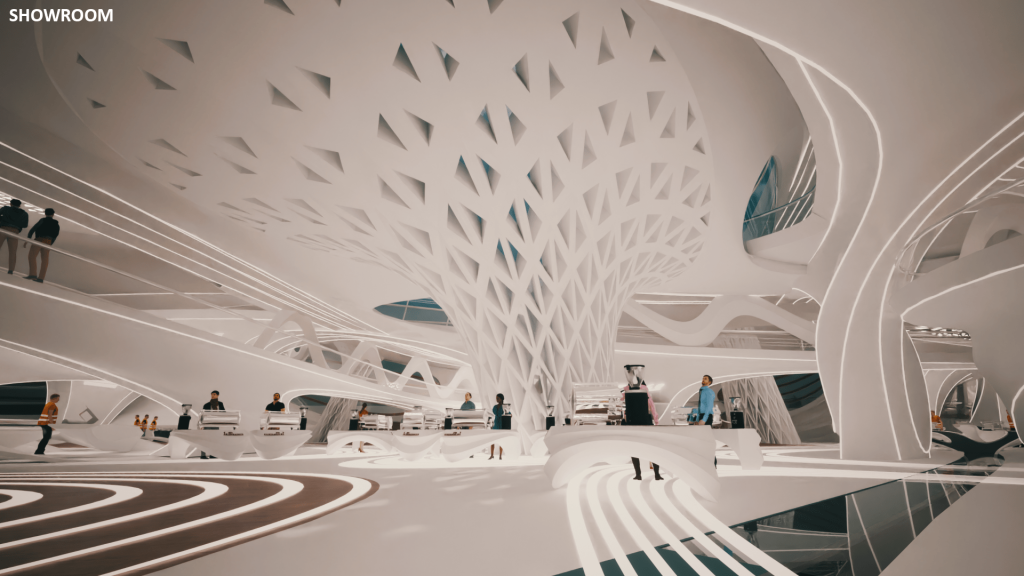
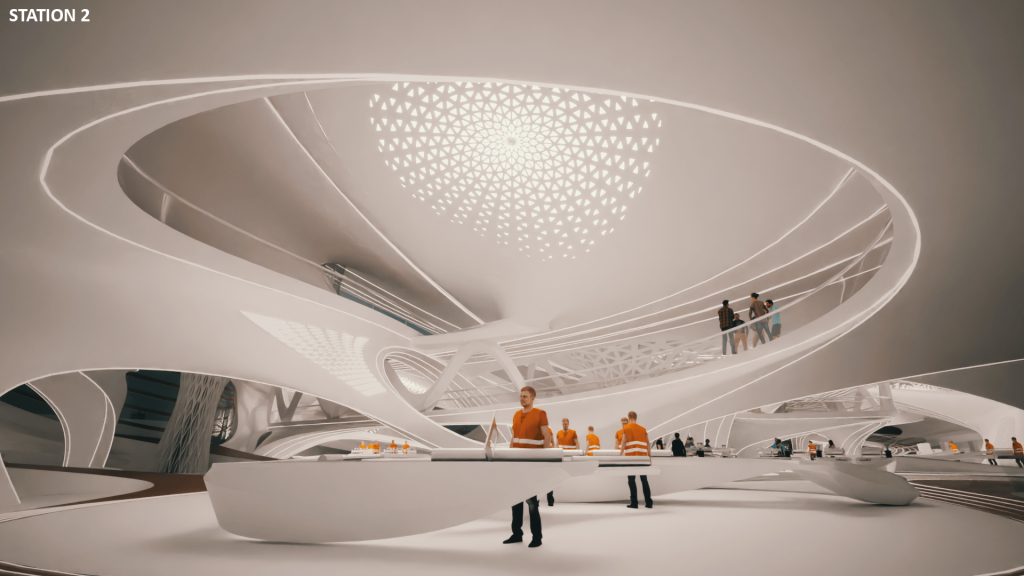
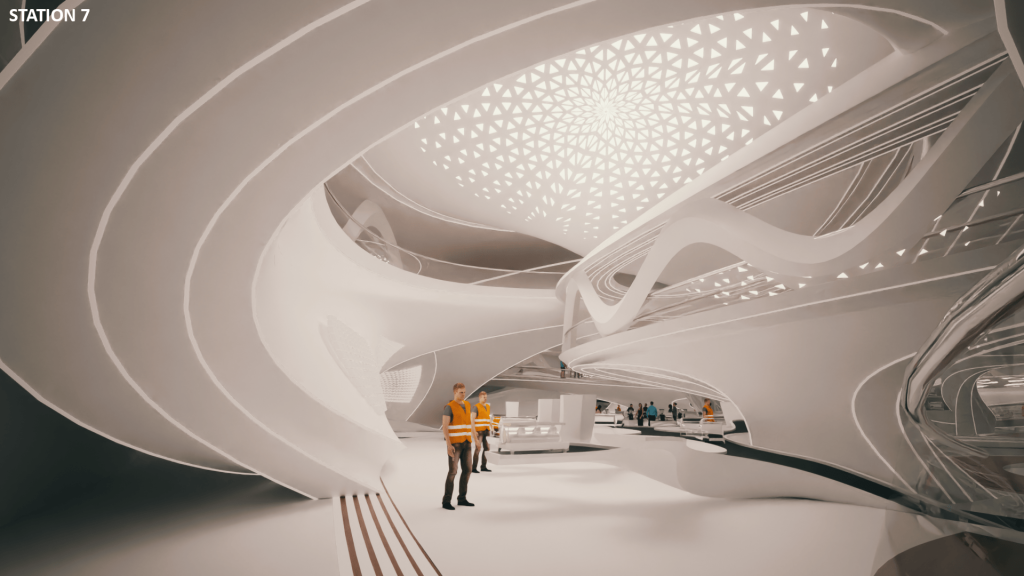
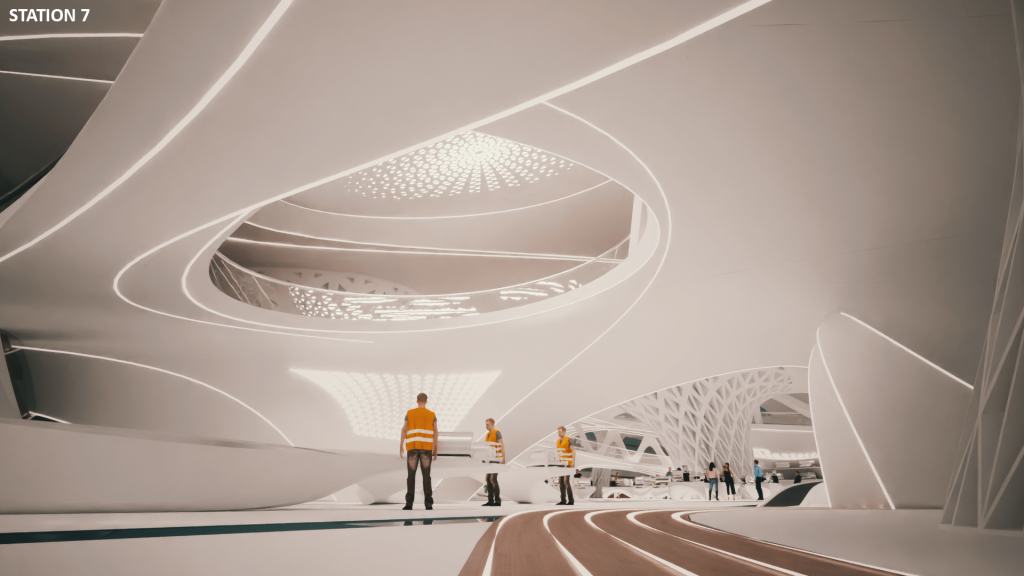
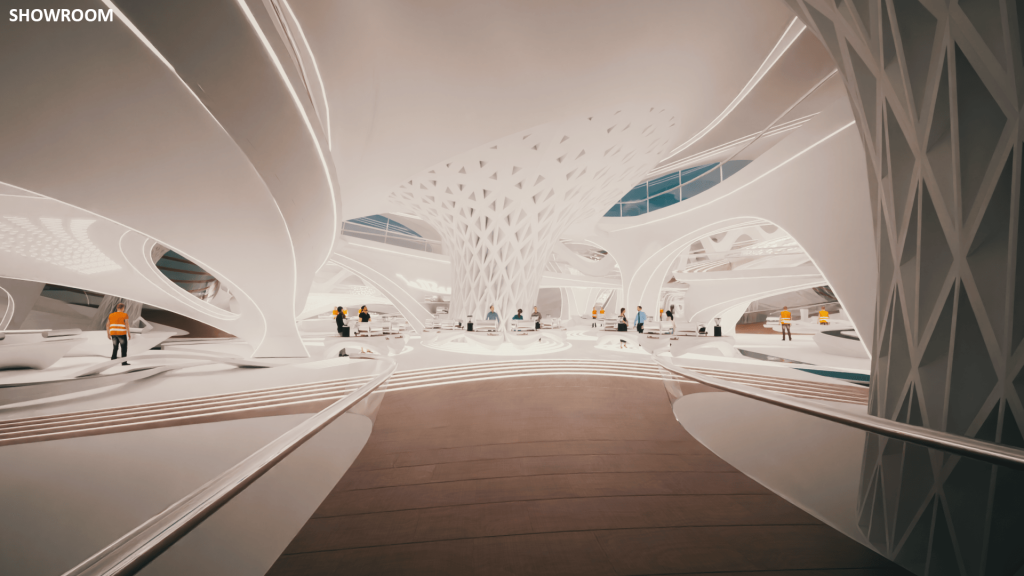
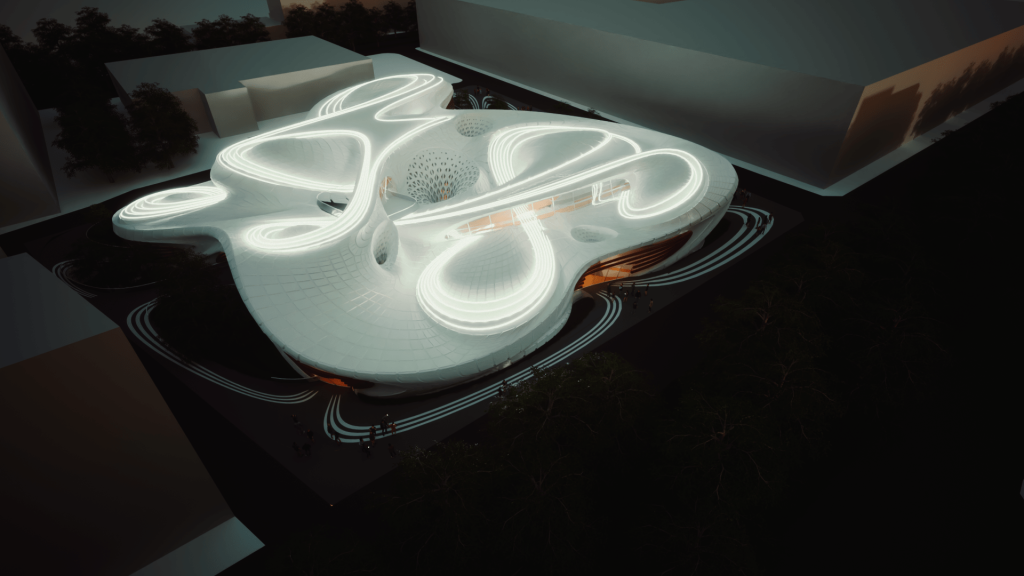
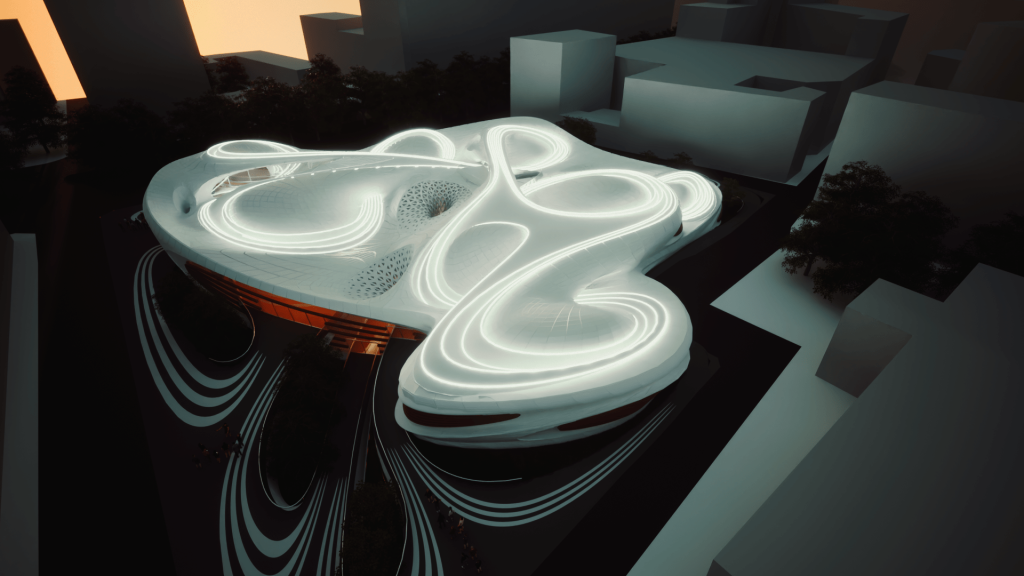
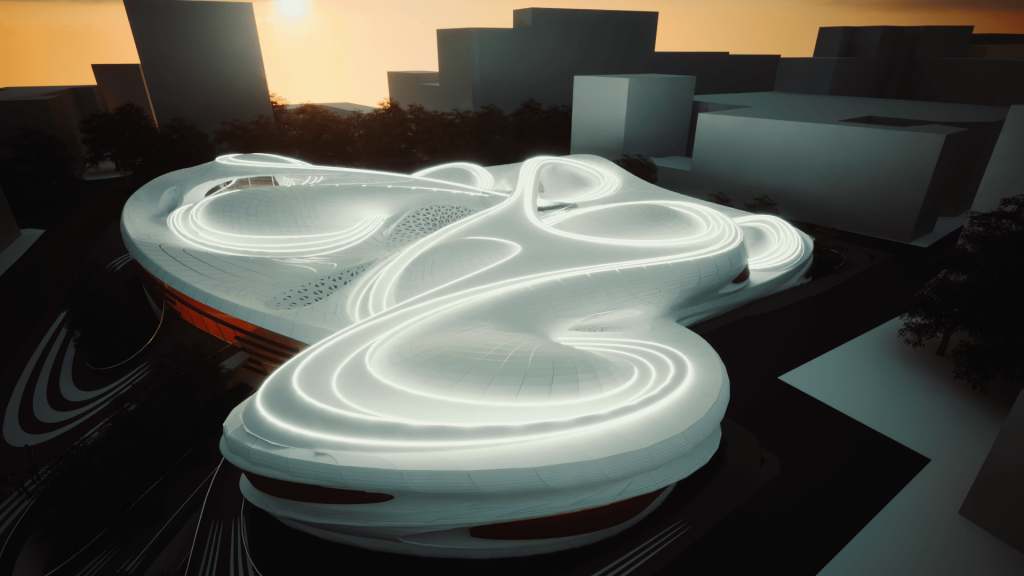
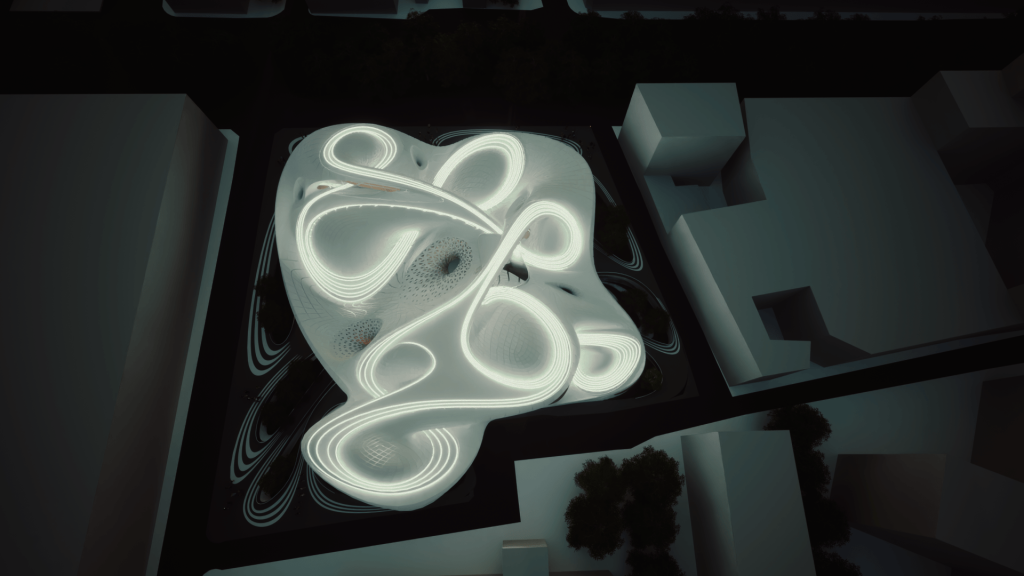
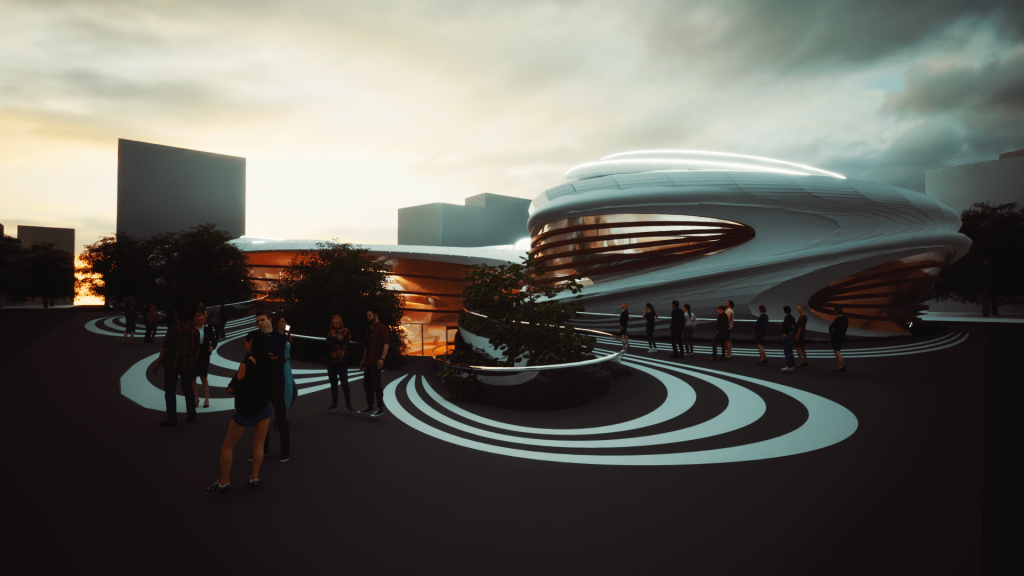



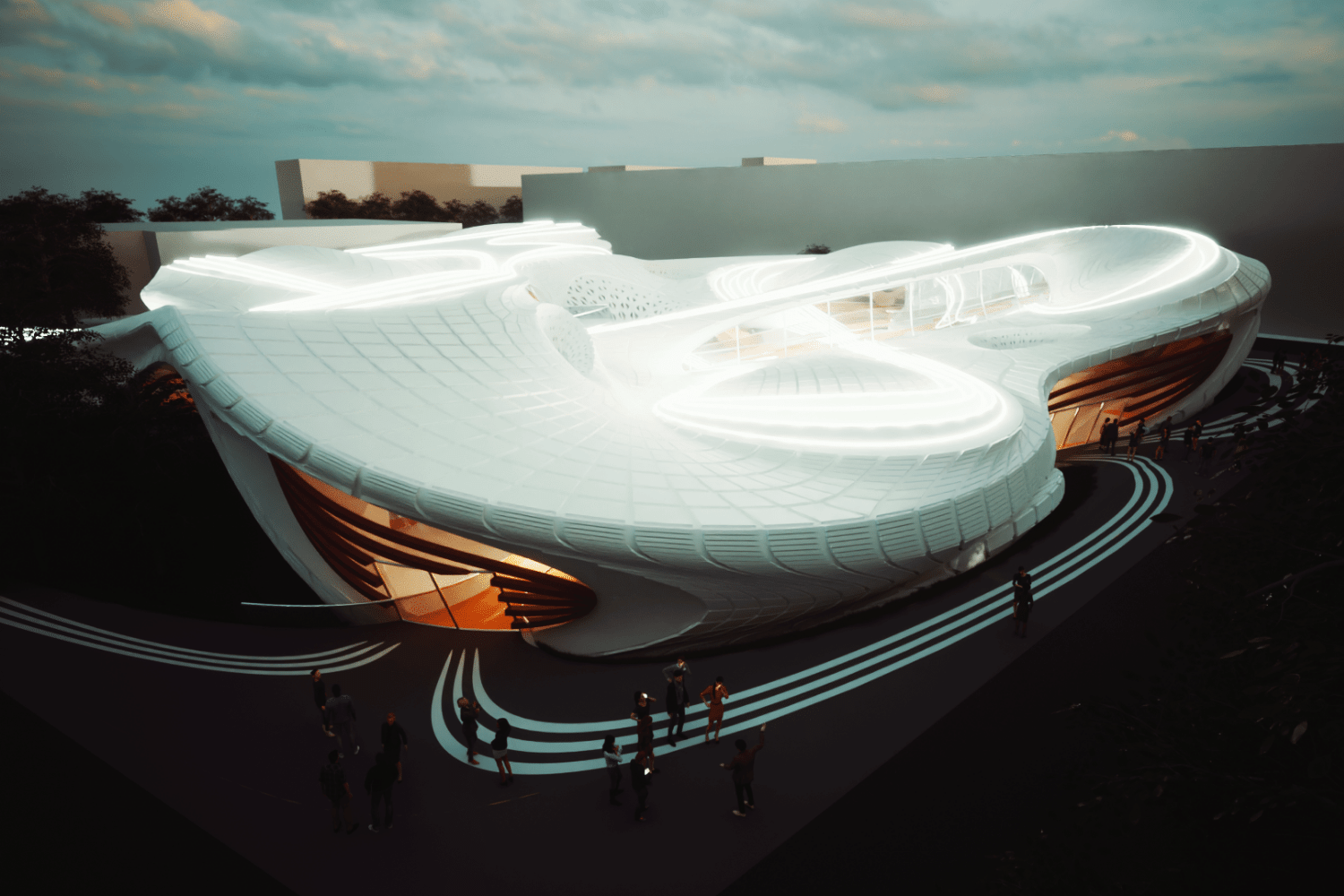

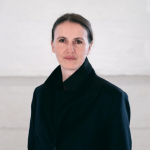
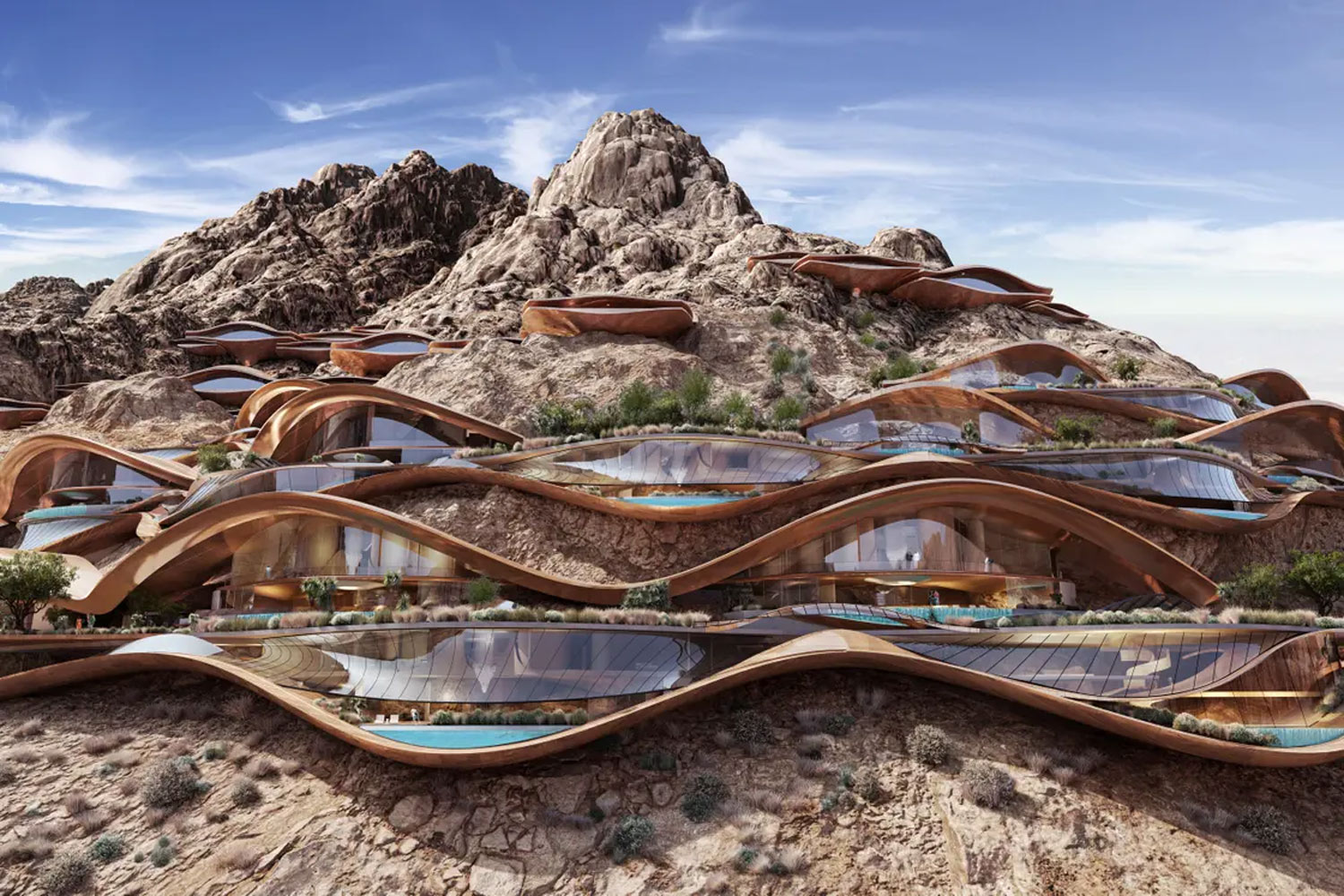
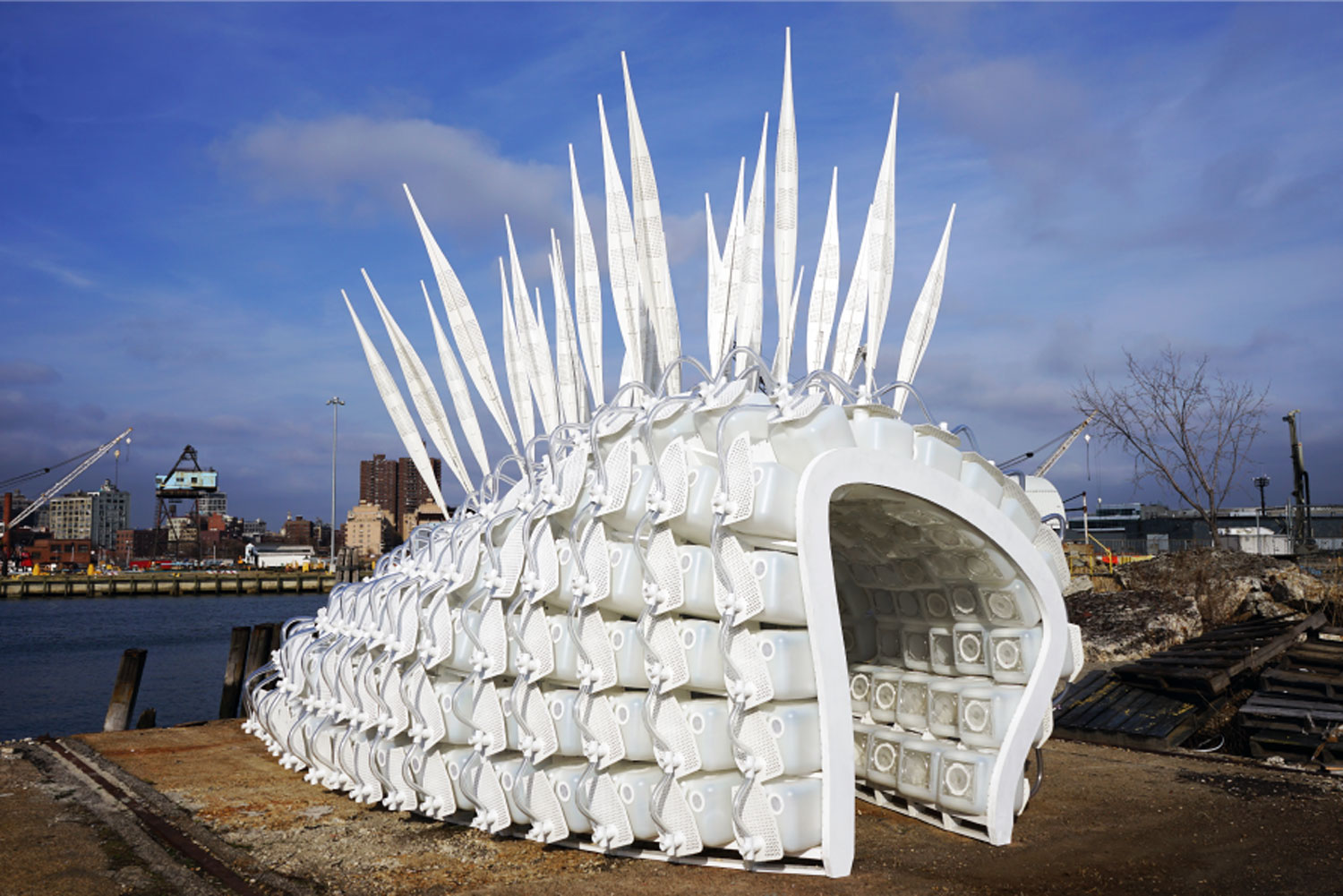
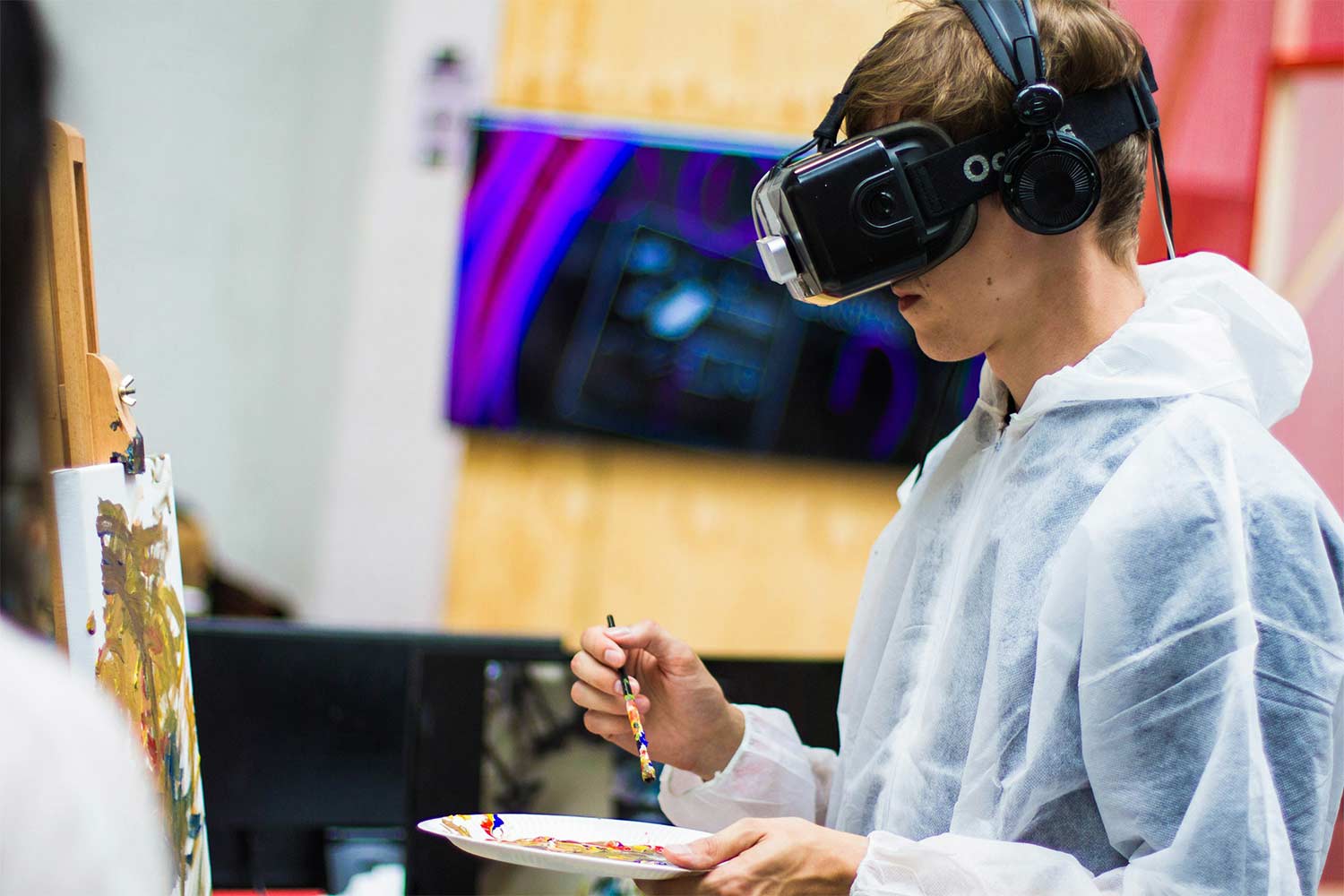
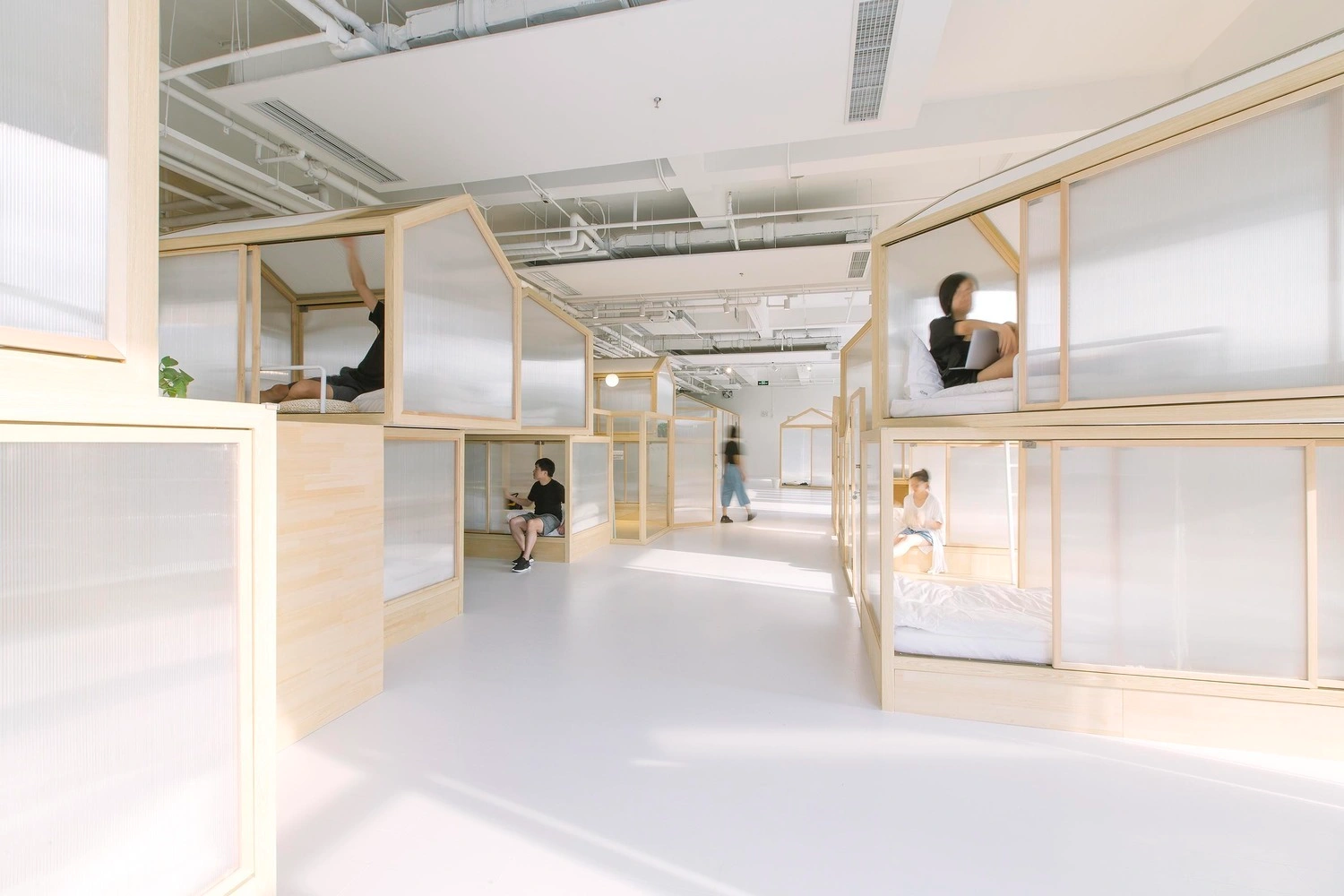








Leave a comment